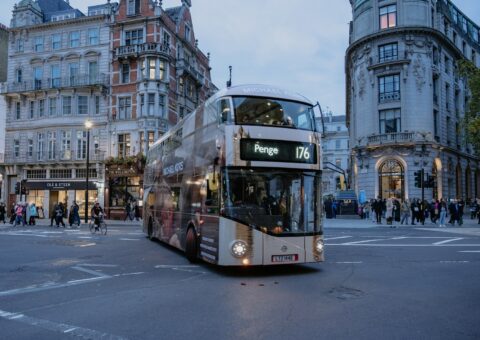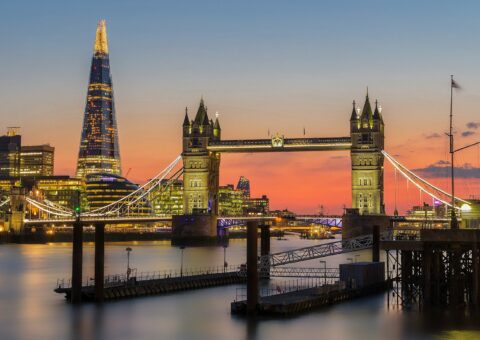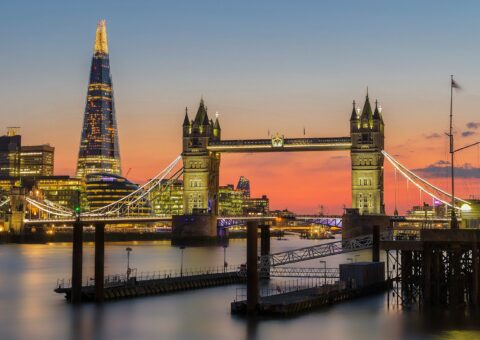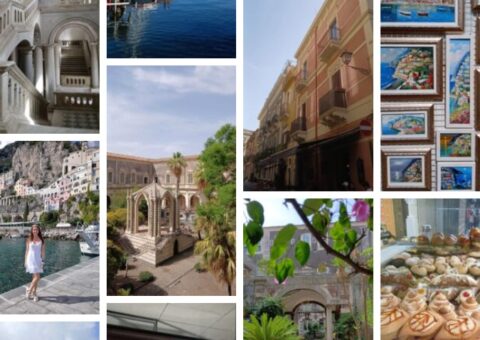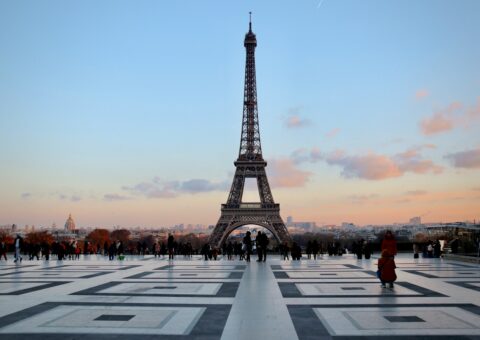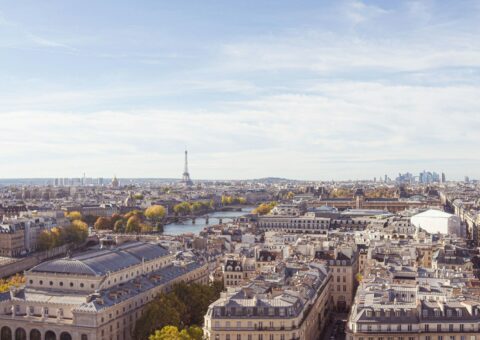The Ultimate Guide to Relocating to Milan
Coming up: visa options, lakes and canals, a massive cathedral, steamy piles of tasty risotto, and Homelike’s top tips on living in Milan.
So, you’re thinking about moving to Milan.
The culture capital of one of the world’s most cultured nations, it’s (understandably) a top choice for a relocation:
Lots of foreigners live in the city, it’s packed with endless things to do, many people speak English, it’s very cosmopolitan, and (for many reasons) it’s an easy place to seamlessly integrate into.
But starting a brand-new life has its challenges. So in this guide, we’ve covered all your questions. Expect information on accommodation, learning Italian, finding a job, getting a good education, and how much money you might (or might not) spend.
Today, your reliable friends at Homelike have brought you everything you need to know about relocating to Milan. Pack your suitcase and come join the party!
Why Move to Milan in 2023?
Top reasons for relocating to Milan include:
- A big international scene: when you’re a non-native, it’s always nice to know you won’t be the only foreigner in town. Well, good news: around 20% of Milan’s residents come from outside of Italy. You’ll always feel welcome here, no matter where you’re from.
- A proud heritage: although Milan is a popular expat choice, it still retains its roots (and, in many ways, it still feels pretty traditional). If you want to move to a big cosmopolitan city with an authentic vibe, Milan is an intelligent choice.
- Good cost of living: we’ve covered this later in much more detail… but if you’re moving to Milan from another major western-European city, your cost of living might fall. Living in Milan is around 33% cheaper than living in London, and living in Milan is around 30% cheaper than living in Bern. That said, living in Milan is more expensive than living in most other parts of Italy.
- Central location: Milan is in a perfect position for getting around. Because the city is in the northern part of Italy, it’s easy to reach Switzerland, France, Austria, and Slovenia. The city also has direct rail connections to many other parts of Italy, and the city’s airport has direct connections to over 170 different worldwide destinations.
- Loads of international schools: good news if you’re relocating to Milan with kids. Again, we’ve covered this later, but the city is home to over 15 high-quality international schools, and the level of education is top-tier.
- Italian food! (We don’t need to add much detail here).
- Endless nearby outdoor fun: within less than a 2-hour drive, you can be exploring lots of outdoor adventures from Milan. Well-known highlights include Lake Como, Lake Lugano, Lake Maggiore, and the Italian Alps. Lesser-known spots include Parco Nazionale della Val Grande, and Parco Naturale Regionale Campo dei Fiori. Controversial opinion, but Milan is arguably Italy’s best city-base for varied outdoor fun.
But it’s not all good news (soz for being all realistic): some of the cons of moving to Milan include bad traffic, lots of pollution, confusing and complex bureaucracy, and the difficulty of finding a place to live. And the weather isn’t as consistently-good as some people expect (winters can be snowy and cold, and January temperatures can occasionally drop below freezing).
But, for the vast majority of people, the perks of relocating to Milan hugely outweigh the pitfalls. And that’ll probably include you!
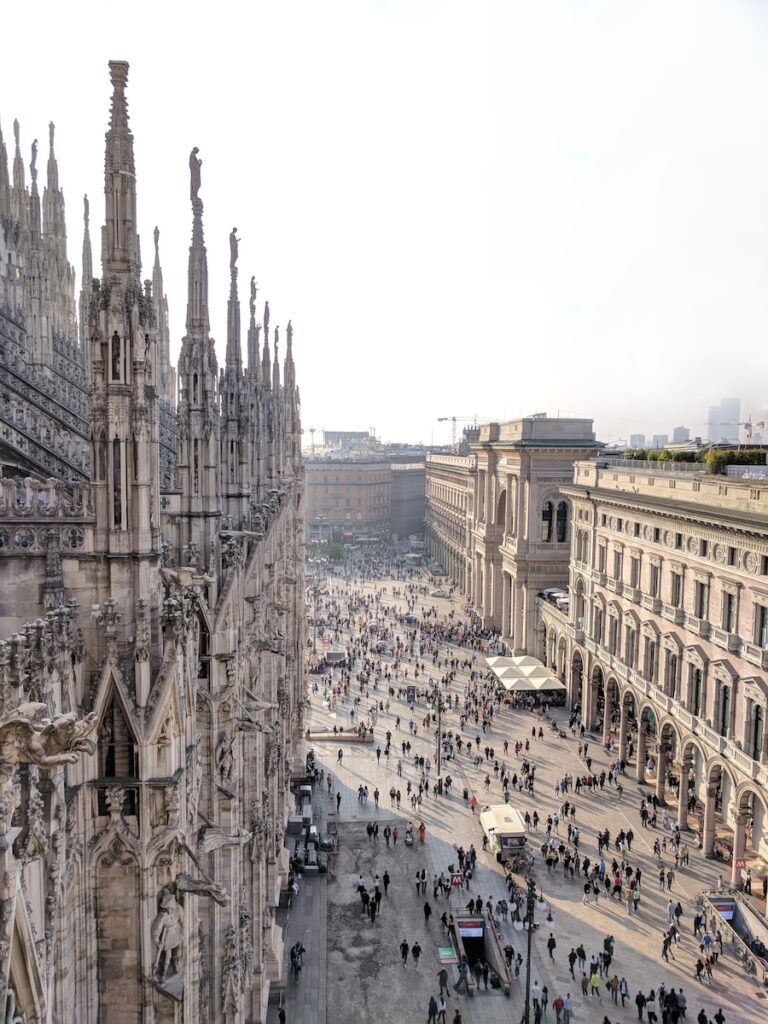
Visa Requirements for Moving to Milan
This section is a bit of a toughy, because there are many different options and complications—so we’ve tried to make it nice and simple for you.
In brief, there’ll be different options and requirements depending on where you’re from:
If you’re moving to Milan from another EU/EEA country, you can do so with pretty much no hassle and no bureaucracy (because of the region’s freedom of movement policy). You arrive in Italy, you start a new life, and that’s it. You’ll need to register for residency (more on that soon), and prove why you are in Italy (whether it’s to study, start a job, or find a job). That said, if you have enough money to support yourself and your family, you don’t need to prove you’ll be working or studying in Italy.
If you’re not from the EU/EEA area, you might be able to visit Milan for up to three months with no visa. The residents of more than 50 nations (including the UK, the US, Canada, Singapore, and Japan) qualify for this scheme. You’ll find a full list of those nations on this page (under the heading ‘Who Can Travel to Schengen Without a Visa?’).
If you’re not one of the above nations, you’ll need a visa even for a short stay. Over 100 nationalities need a visa to spend any time at all in Italy. You’ll find the full list on this page (under the heading ‘Who Needs a Schengen Visa?’).
If you want to stay in Milan for longer than 90 days (and aren’t from the EU/EEA area), you will again need a visa. Your best options are (and the best options for most people reading this guide are):
- Italy Work Visa: of course, this is for people who’ll be relocating to Milan for work. You already need to have secured a job in Italy before you apply.
- Italy Self-Employment Visa: for now, this is usually the best option for digital nomads. It’s for people who work online, or anyone who wants to open a business in Italy.
- Italian Retirement Visa: for non-working people who have enough money to support themselves in Italy. To qualify for this, you need a minimum annual retirement income of €31,000 per year (if you are alone), and a minimum annual combined retirement income of €38,000 (if you are applying with a partner). And, crucially, you of course can’t undertake any paid work in Italy while using this visa.
- Italy Student Visa: for people who are moving to Milan to study. You need to have been accepted onto a course in Milan before you apply for this.
With all of the above visas, you receive the right to stay in Italy long-term. But you’re only allowed to exercise this right after you also get your Italian residence permit.
To get this residence permit (‘or residence card’, as it’s also known), you must visit your local police station (‘Questura,’ in Italian) within 8 days of arriving in the city, AND complete the registration at your local registry office (‘Anagrafe,’ in Italian) within 90 days of arriving in the city. You need to provide an address in order to complete this registration process. And, to be clear, if you’ll be in Italy for fewer than 90 days, you don’t need to do any of this. Here’s more information.
Note: other visas also exist (such as investment visas, those for people with Italian families, and even transit visas). But for the majority of people, the above long-term visas are the best options.
In case you’re wondering, no: Italy does not yet have a digital nomad visa. In 2022, a hypothetical scheme was announced, and signed into law. So it looks like an Italian digital nomad visa is somewhere on the horizon. But at the time of writing, it doesn’t yet exist.
Navigating Bureaucracy in Milan
Aside from your visa (if you need one), you’ll also have other bureaucratic stuff to think about after moving to Milan. Some of the most important include:
- Your residence permit (as we’ve already covered). But we won’t bore you with the details of that again.
- Your Italian tax number (which, of course, you’ll only need if you’ll be undertaking work in Italy). Also known as a ‘Codice Fiscale,’ you get this by visiting your local tax office after you’ve registered your address (as part of your residence permit application). See what we mean about the difficulties of Italian bureaucracy?
- Opening a bank account: to make this as easy as possible for yourself (at least in the short term), we recommend opening an account with an online bank, such as N26 or Wise. With an online bank, you don’t require many documents, and you can have a ready-to-use account within minutes.
- Utility bills, like gas, electricity, and water. But because Italian bureaucracy can be quite challenging, organizing these things can be tough, especially when you first arrive. To avoid that challenge, many people choose to move into a serviced apartment or a serviced flat (where all bills and utilities are covered in the price of rent).
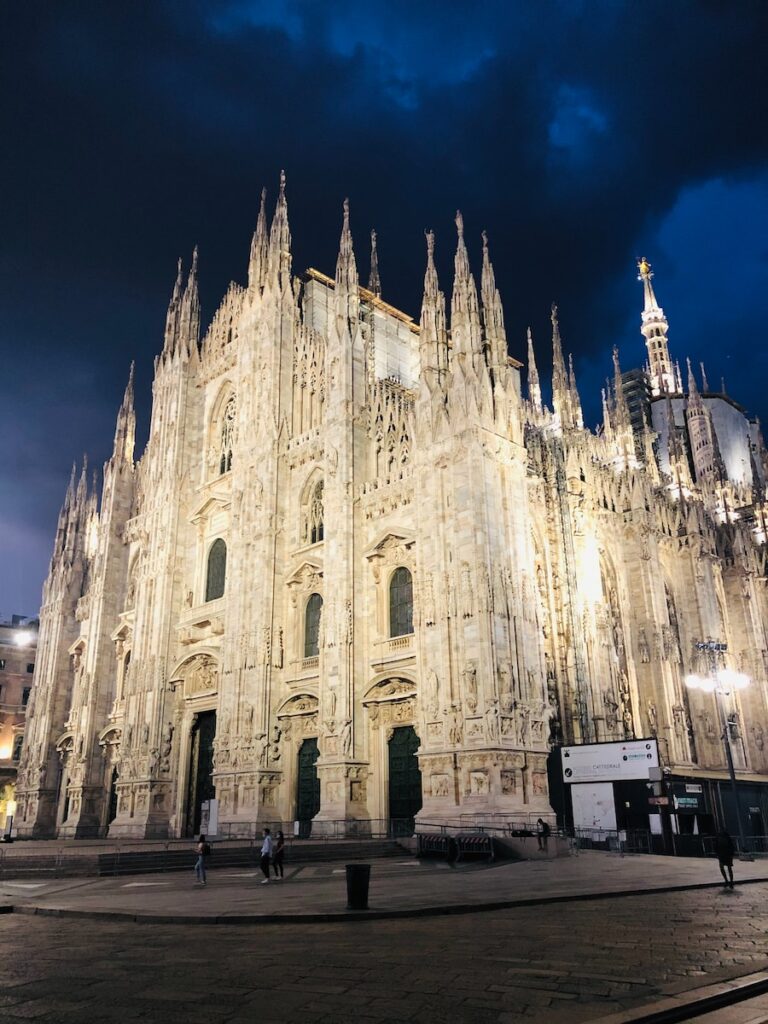
Best Neighborhoods to Live in Milan
When relocating to Milan, these are some of the top neighborhoods to consider:
- Brera: if you’re only moving to Milan for a short while, you might want to stay here. Sitting in the very center of the very center, it’s packed with tourists, historical sights, endless restaurants, and loads of things to do.
- Porta Venezia: a good option for many types of people. Here, you get good nightlife, a multicultural vibe, a young population, lots of kid-friendly stuff, and excellent public transport. For central long-term stays, it’s a good place to start your search.
- Navigli: a top choice for fun-loving young people, this hip and happening district is full of drinkers, students, pretty canalside stretches, and some of the city’s best bars.
- Zona Tortona: if you’re moving to Milan with kids, this is a top choice. Although it sits only around 2 miles (3km) from the center of the city, it’s peaceful and quiet, and it serves up a big community spirit. Zona Tortona also offers close proximity to Bloom International School (among the best international schools in the city).
- Porta Romana: a busy residential area, this is a great pick for long-term stays. Though it’s pretty central, it’s also quiet—and its grid-like layout is very organized. It offers local people, houses for all budgets, and big fat slices of authenticity.
We’ve covered all these areas and more in our big juicy guide to the 10 best neighborhoods in Milan.
Finding Accommodation in Milan
Right now, you can expect to pay around 1,410€ per month for a 1-bedroom apartment in the center of Milan… or 915€ per month for a 1-bedroom apartment outside the center of Milan.
Some of the best websites for finding homes are Homelike, immobiliare.it, Idealista, and Casa.it.
Surprisingly, Facebook can also be a good option—jump onto the site’s search function, and enter terms like ‘housing in Milan’ and ‘apartments in Milan’ (groups like this one and this one are a good place to start). In these groups, you’ll find lots of foreigners and locals offering varied places to stay.
Other choices include living long-term in hostels or hotels, or finding a co-living space.
… but, as newbies to the city soon come to find out, one of the toughest challenges of relocating to Milan is finding a nice apartment.
Because many people are moving to the city every day, the good apartments quickly find new tenants. If you don’t speak the local language, you’re at a disadvantage… and local landlords often charge unfair prices for not-great places.
… so, in the short-term, your easiest option is (usually) to move into a serviced apartment or a serviced flat. With a serviced place, you don’t have to negotiate fees, you don’t have to source furniture, and you don’t need to spend your first weeks in Milan in a stressed-out state. Easy!
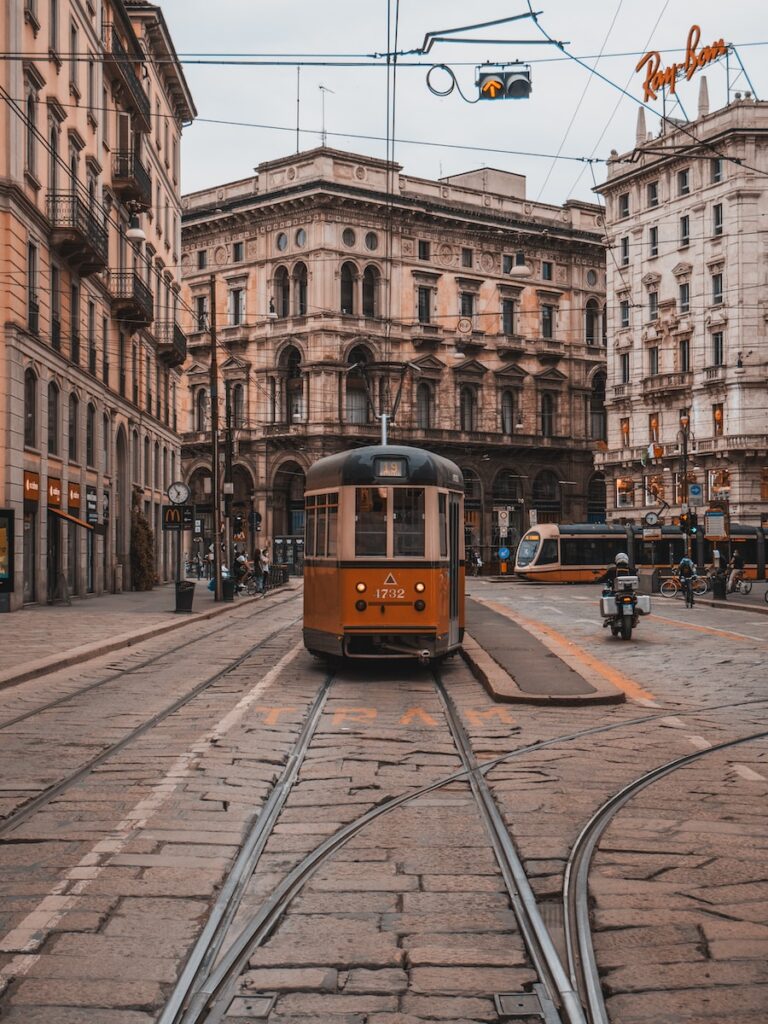
Finding a Job in Milan
Moving to Milan to find a job is a pretty popular move.
Loads of young professionals come here to get a job, and many students stick around long after graduating. The city is known as a big tech and innovation powerhouse, while some of Milan’s other large sectors include transport, distribution, and (this one won’t surprise you) fashion.
But because this is a major city with a major economy, it’s possible to find a job in pretty much any industry here.
Your best job-finding resources are Indeed, Ticonsiglio.com, and jooble.org. You’ll have a much better chance of getting a job if you speak (or are learning) Italian.
Average base salaries in Milan (according to SalaryExpert) sit at around 41,561€ per year. If you’re an expert in your field, you can expect to earn a little (or perhaps a lot!) more.
Learning Italian when Moving to Milan
If you’re only moving to Milan for a little while, learning Italian might be a big ol’ waste of time.
But if you’re relocating long-term, learning Italian is a good idea:
Bureaucracy will become easier. You’ll make more friends. You’ll be able to better immerse yourself into the culture and the lifestyle. And, as we mentioned, you’ll have a better chance of finding a good job.
To get started, your best resource is the super-popular Duolingo, which is basically a big fun game. Good intermediate options include Babbel and Rosetta Stone, while other good choices include One World Italiano (developed by an Italian language school, it uses a vast range of varied resources), the Italian Mastery YouTube channel, and the kookily-designed Italian Experiment.
Milan’s Culture and People
After relocating to Milan, you’ll need to adapt to the culture of the city, and the personalities of its people.
But you probably won’t find the process too challenging. Milan is cosmopolitan and multicultural, so it’s not vastly different to most other western-European cities.
Broadly speaking, the city is usually described as crowded, artistic, clean, and well-organized. It’s easy to navigate and get around, and the city has a magnetic charm once you settle into its (fast-for-Italy) rhythm. You’ll always find artistic events, the nightlife might just be the best in Italy, and there’s a big focus on shopping.
From Milan’s people, you can expect residents who dress well, eat well, and like to party and socialize. Although there’s a vague surface-level frostiness, people are very warm and welcoming once you get to know them. Generally, the city also has a pretty happy vibe.
Healthcare in Milan
Italy’s healthcare isn’t quite as good as it once was.
According to the FREOPP 2021 World Index for Healthcare Innovation, the nation ranks 28th worldwide (which, let’s be honest, in a planet of almost 200 countries, is still a pretty good ranking).
Broadly speaking, Italy’s private healthcare system is better than its public healthcare system (with better care and shorter waiting times). To use this private healthcare system, you’ll need to get private insurance. Any of the big providers, like AXA and Cigna, are good places to start your search.
To use Italy’s public healthcare system (which is known as the ‘Servizio Sanitario Nazionale,’ or ‘SSN’) you’ll need to get a National Health Card (known as a ‘tessera sanitaria’).
To get your National Health Card, make an appointment at your local health unit (known in Milan as ‘Azienda Sanitaria Locale,’ or ‘ASL’). Take your passport, your residence permit, your proof of address and your tax code, and complete your application. A little while later, your health card will be sent to you in the mail.
Here’s more information on healthcare in Italy.
Education in Milan
For families, this is one of the biggest perks of relocating to Milan.
According to this site, there are 18(!) international schools in the city, serving ages from 2 to 18.
Some of the best options include Bloom International School (which some reckon is the best in the city), St. Louis School, and Andersen International School.
That said, if your kids are young and you’ll be living in Milan for a while, you might want to place them into an Italian-speaking school.
Milan is also a good choice for university-seeking international students. Because it’s the most multicultural city in the nation (around 5% of the city’s students are from outside of Italy), it’s easy for young people to adjust and feel at home in the city.
… and on top of that, the levels of education are great. The city has 14 universities—and some of the best are the University of Milan, the Politecnico di Milano, and Bocconi University.
Last of all, if you want to learn Italian at an in-person venue in the city, two of your best options are Scuola Leonardo da Vinci, and ELLCI.
Transportation in Milan
Moving to Milan without a car is easy.
Milan’s public transport system is affordable, reliable and extensive, and you can easily get from any part of the city to any other part of the city.
The city’s public transport system is made up of 4 tram lines (covering more than 60 miles/95 km), 18 tram lines, and over 80 bus lines. And because all the systems are well-connected, it’s easy to hop from one method of transport to another.
It’s possible to buy single tickets, and multi-trip batches of tickets.
… but since you’ll be living in MIlan, your best option is to instead just tap on and off public transport by using your debit card (though you’ll of course need an Italian bank account to do that). You can do this on all city-center routes.
Although the cycling infrastructure in Milan isn’t as good as what you might find in somewhere like Germany or the Netherlands, it’s improving all the time, with a surprisingly-large number of bicycle lanes. Many people cycle, car drivers are accustomed to cyclists, and the city is very flat and dense—so it’s an easy and fun city to cycle around in. For short rides, the BikeMi scheme is perfect.
Quality of Life in Milan
Many people relocate to Milan for its high quality of life: in the Global Power City Index 2022, Milan ranked impressively as the 5th-most liveable city in the world.
According to the above link, the list was assembled by “considering indicators such as cost of living, working environment, security and safety, well-being, and ease of living.” The city’s work-life balance is also pretty good… and you’ll find plenty of events, attractions, things to do, and places to eat, drink, and party.
It’s also a pretty safe place. Here’s more.
Milan’s air quality isn’t great, and the cost of living is high compared to many other parts of Italy. But on the whole, Milan is an excellent quality-of-life place to live.
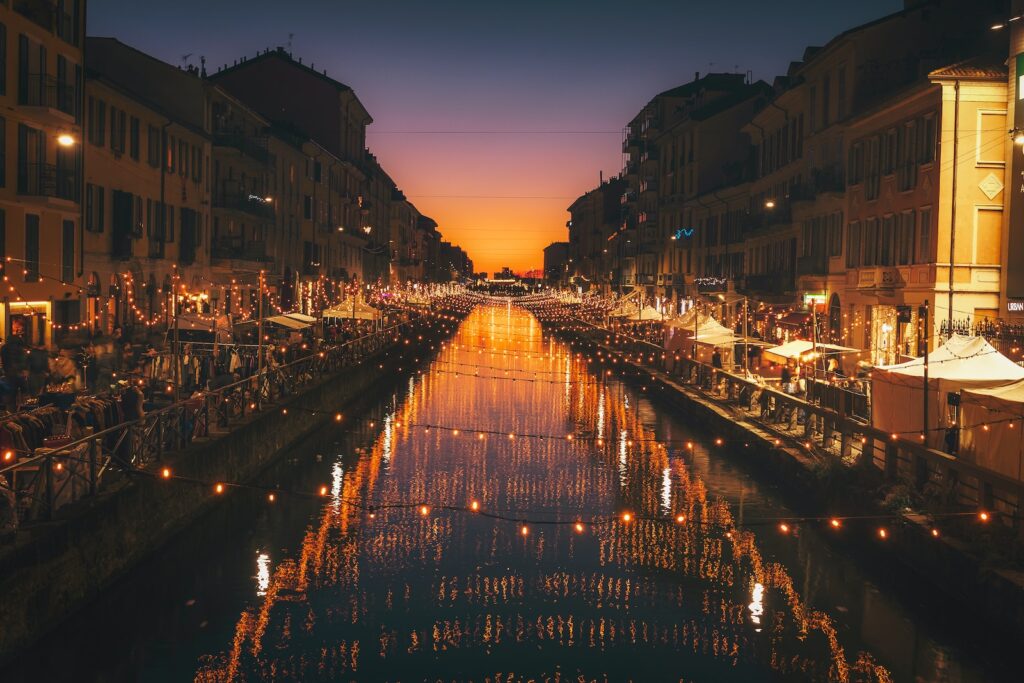
Cost of Living in Milan
After relocating to Milan, here are the types of prices can you expect:
- 1-bedroom apartment in the city center: 1,410€
- 1-bedroom apartment outside the city center: 915€
- 3-bedroom apartment in the city center: 2,955€
- 3-bedroom apartment outside the city center: 1,848€
- One-way ticket on local public transport: 2.20€
- Regular monthly pass for local public transport: 39€
- Meal for 1 at an inexpensive restaurant: 20€
- 3-course meal for 2 people at a mid-range restaurant: 80€
- Large draught domestic beer in a bar or restaurant: 6€
- Regular cappuccino in a cafe or restaurant: 1.98€
- Regular liter of milk from a supermarket: 1.52€
- 12 regular eggs from a supermarket: 3.93€
- 1kg of local cheese from a supermarket: 16.37€
- 1kg of chicken breast filets from a supermarket: 11.84€
We’ve taken all the above figures from Numbeo, a crowd-sourced collection of reliable cost-of-living stats. Whenever you’re relocating anywhere, it’s a great place to check for the type of prices you can expect
Moving to Milan from the UK
If you’re moving to Milan from the UK, things are a bit more challenging than they once were.
Brexit has come and gone, the UK is no longer part of the EU, and its residents no longer have freedom of movement.
So if you want to travel visa-free, you can only do so for fewer than 90 days. For longer stays, you’ll need to get a long-stay visa (as outlined above).
Broadly speaking, people from the UK will find Milan a little more affordable than home, and the weather a lot better. Milanese folks are a little more hip and fashionable than UK people, while Italian bureaucracy is slower and more frustrating than UK bureaucracy.
On the whole, many people who relocate to Milan from the UK find the quality of life to be better.
Moving to Milan from the US
If you’re moving to Milan from the US, your visa rules and requirements are the same as they are for people relocating to Milan from the UK.
People moving to Milan from the US usually find Milan to be safer than home, and the quality of life to be better. Superficially-speaking, Italian people might appear less friendly than American people, but it’s very easy to make friends in the city.
Car use is way less frequent in Italy, while bureaucracy is slower, and food is healthier. Public transport is better (especially both long-distance and short-distance railway travel).
Moving to Milan as a Young Adult
Moving to Milan is a good idea for young adults.
You’ll find 14 universities, many other young people, excellent educational opportunities, great post-graduation job opportunities, and world-class nightlife. It’s easy to make friends, it’s easy to feel at home, and it’s easy to build a life in Milan.
Top tip: you’ll have an even better time if you make an effort to learn the local language.
Moving to Milan with a Family
As we’ve covered, moving to Milan with a family is a good choice.
The city is safe, it has plenty of green spaces, you’re close to many outdoor adventures, there are loads more international kids for your children to buddy up with, and the city is home to 18 international schools (many of them in the city center).
For embarking upon a brand-new family life, Milan is one of the best cities in western Europe.
Moving to Milan: Final Thoughts
Alright you enthusiastic explorer, that’s everything you need to know about relocating to Milan.
As you’ve probably worked out by now (no matter who you are!), you’ll likely love living in the city.
But it’s not all good news: again, the biggest struggle of moving to Milan is usually finding a good place to live. So in the short-term, it’s often best to move into a serviced apartment or a serviced flat.
… all of ours are fully-furnished, well-located, and perfect for both living and working; ideal for moving to Milan with no fuss and no stress.
For more on relocating to Italy, here are some first-hand accounts from people who’ve made moves to Bergamo and Rome.
Thanks for reading, thanks for choosing Homelike, and have an incredible time in Milan. Ciao for now!




